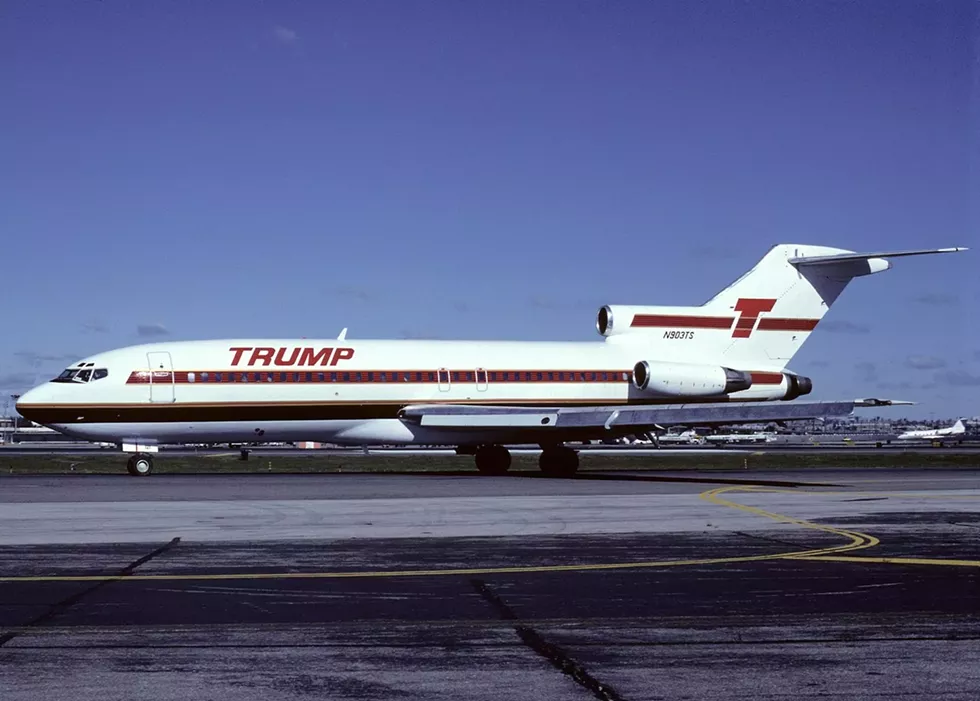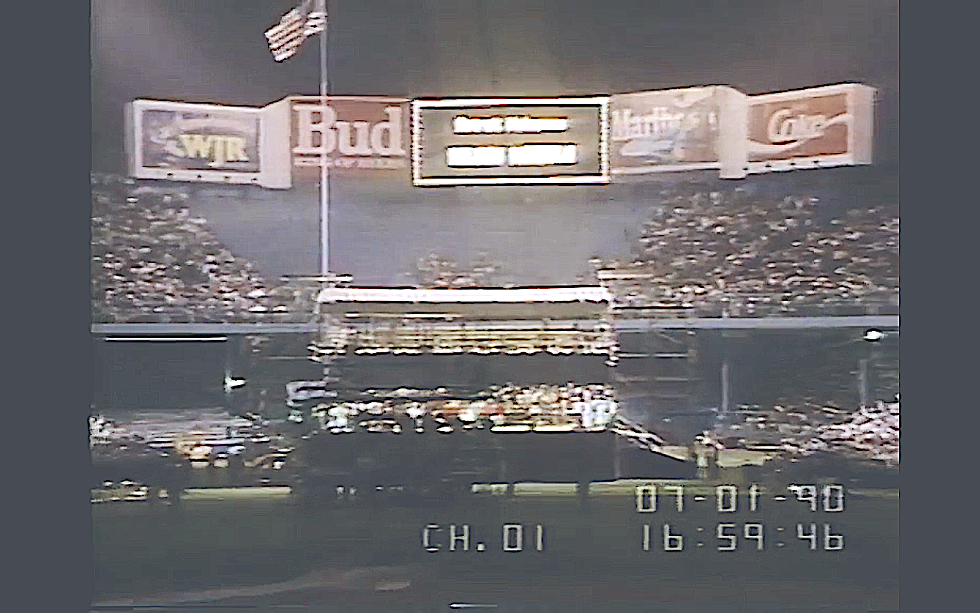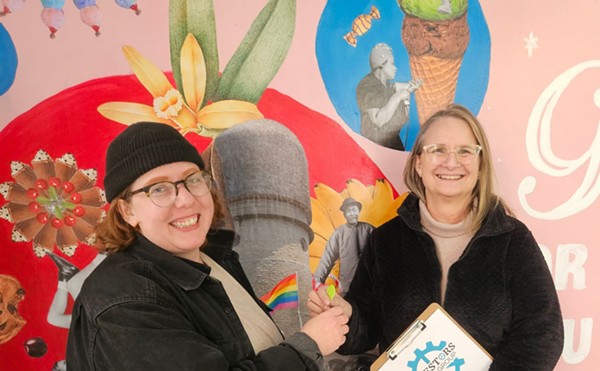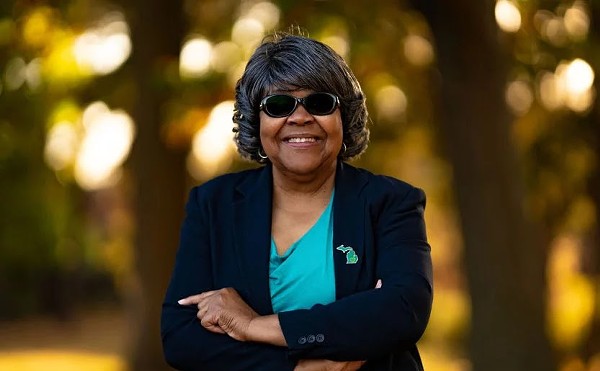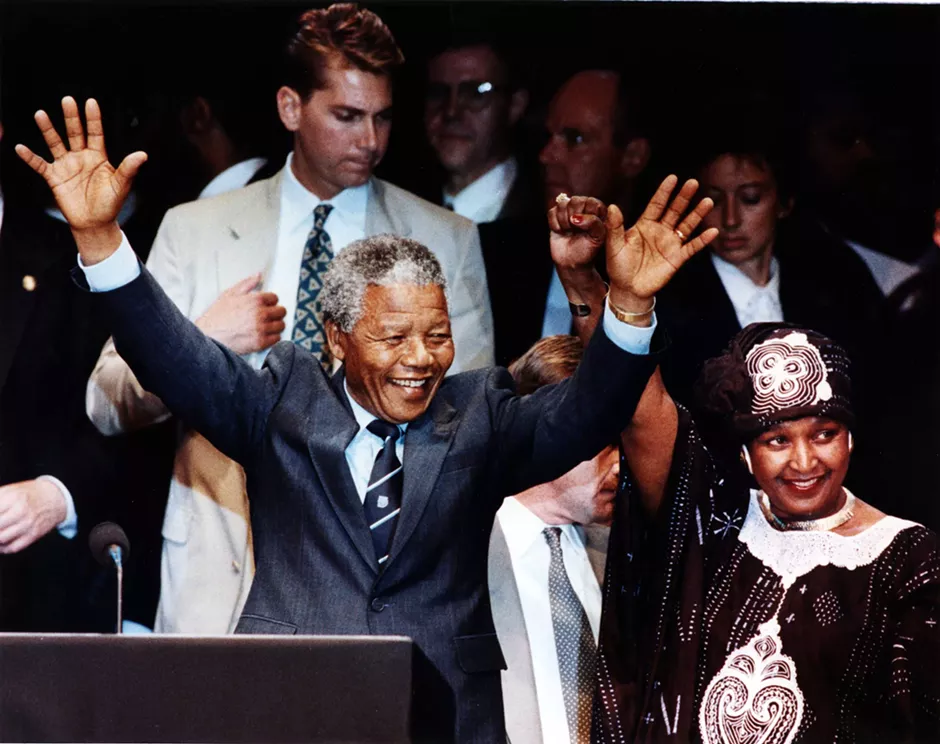
Thirty years ago on a portentous day in Pretoria, South African president F.W. de Klerk announced he would free Nelson Mandela the following day after the Black anti-apartheid leader had spent more than 27 years as a political prisoner of the country’s white minority government.
It was a watershed moment in world history.In Detroit, Mandela’s supporters rejoiced. But in the South African capital of Pretoria, 2,000 neo-Nazis marched through the streets brandishing swastikas and chanting “Hang Mandela!”
The future of South Africa hung in the balance.
The next day in Tokyo, just hours before Mandela walked out of prison a free man, a little-known longshot named James “Buster” Douglas shocked the boxing world — and ringside spectator Donald Trump — with a stunning knockout of undefeated heavyweight champion Mike Tyson.
Three days later, on Valentine’s Day 1990, Detroiters marched from the Museum of African American History to Ford Auditorium to celebrate Mandela’s release. And just a few months later, with the world’s attention focused squarely on Mandela, he was on his way to the Motor City — or as he called it, Motortown.
That summer, Coleman Young was in his fifth and final term as Detroit’s first African American mayor, Dennis Rodman and the Bad Boys had just won their second consecutive NBA title, and a former Oakland A’s bat boy named Stanley Burrell captivated the nation with his infectious rhymes and oversized dance pants.
Everywhere you turned, it was Hammertime.
In June of that year, Mandela embarked on a grueling 11-city North American freedom tour to bolster support for the African National Congress and to urge foreign leaders to continue their sanctions against Pretoria in the effort to dismantle apartheid.
In New York, Mandela received a ticker-tape parade; in Washington, he became the first Black private citizen to address a joint session of Congress; and in Boston, he addressed a crowd of more than 200,000 people along the banks of the River Charles and danced to the sounds of Hugh Masekela.
But all along his tour, Mandela was hounded by death threats from right-wing extremists who hated to see him go free. Just days before his arrival in Detroit, an anonymous caller told a 911 dispatcher in Auburn Hills that when Mandela comes to Michigan, “I’m going to kill him.”
But despite the threats on Mandela’s life, Black political leaders in Detroit, along with the UAW and its president, Owen Bieber, who had long fought against the South African government’s racist apartheid policies, were eager to welcome him to Motortown.
On June 28, as Mandela’s plane touched down at Metro Airport, the 71-year-old deputy president of the African National Congress was shoring up American support for the ANC and plotting a course forward for a new biracial government in South Africa.
As Mandela and his wife, Winnie, exited their Boeing 727 — the word “Trump” emblazoned across it in capital letters — waiting to greet them on the apron were Detroit mayor Coleman Young, federal judge Damon Keith, and the mother of the civil rights movement, Rosa Parks.
After a rousing reception in an airport hangar and a stop at the Ford Rouge factory in Dearborn, where he proudly told UAW workers, “I am your comrade,” Mandela would make a pit stop at his hotel in the Renaissance Center before being whisked away to Corktown, where 49,000 jubilant supporters eagerly awaited his arrival.
The week before, Mandela had been serenaded by the likes of Richie Havens, Johnny Clegg, and Tracy Chapman at Yankee Stadium, where Joe Louis famously defeated Max Schmeling in 1938.
Waiting to serenade him at Tiger Stadium, where Louis defended his heavyweight crown in 1939, were Stevie Wonder, Aretha Franklin, and Dr. Teddy Harris, along with a 2,000-person choir led by Reverend Edgar Vann.
Fear of the unknown
Longtime Corktown resident and retired Detroit schoolteacher Mark Crowley was at the Mandela rally that night, one of the relatively few white people among the largest Black crowd ever to assemble at Tiger Stadium. “It was a very different atmosphere inside and outside the stadium than a Tigers or Lions game,” Crowley recalls. “From a couple conversations I had before the event, a couple of neighborhood businesses, unfortunately, seemed to be a bit edgy about it all, i.e., too many Black people gathered in one place.
“But it turned out to be the most peaceful event ever held there that I can remember.”
With the stadium gates opening at 4 p.m. that day, Crowley says some Corktown business owners were uncomfortable. “They didn’t know how the event was gonna go down,” he says. “Bagley-Trumbull Market closed at 3 o’clock that day.
“Another guy who was a mechanic in the neighborhood — I was in his garage that day. He said, ‘I brought my gun to work today. … I’m gonna be ready.’" That mechanic, Crowley says, also brought his gun to work on the day of the Malice Green verdict in 1993.
“But if those guys had been in the stadium that night and seen the peaceful setting — people of every class and race talking to each other — they might’ve understood,” Crowley says. “There was just a real kindred spirit with everyone in the stadium that night. Everybody knew why they were there — for this incredible man in our presence,” Nelson Mandela.
“It was just peaceful, solemn, joyous … and such a sense of solidarity in sharing this unbelievable moment with this great leader who’d fought for justice his whole life.
“I guess that for some folks outside the stadium, it was just fear of the unknown.”
Janet Webster Jones, an African American businesswomen and longtime proprietor of Midtown-based Source Booksellers, was also at the rally that night. She puts it more succinctly:
“They were just afraid of Black people,” she says. “That’s all.”
Reverend Wendell Anthony, longtime pastor of Detroit’s Fellowship Chapel and president of the Detroit branch of the NAACP, served as emcee at Tiger Stadium that night.
Recalling Martin Luther King Jr.’s 1963 “I Have a Dream speech,” Anthony says Mandela’s coming to Detroit was like the fulfillment of another dream.
“For many people who had never experienced the walk down Woodward Avenue with Dr. King in ’63,” he says, “this was their walk to freedom.”
In the clearing stands a boxer
After a long day of celebration and anticipation inside Tiger Stadium, the hour is finally near and Mandela’s arrival appears imminent. As his car finally rolls onto the warning track shortly after 10 p.m., Reverend Anthony implores his audience. “Let us get ready!”
As Mandela’s limo inches its way toward the stage, the crowd nears a fever pitch. The 2,000-person choir, in its white shirts and ANC sashes, rises to its feet; jubilant Black men in kufis and dashikis wail away on their djembes.
As Mandela steps out of his car and into the night, he is beaming. Reverend Anthony roars into his microphone.
“Amandla!” he cries, his impassioned voice echoing in the night.
“Ngwethu!” the crowd roars in response.
“Amandla!”
“Ngwethu!”
Power to the people.
As he surveys the massive crowd, Mandela knows he is among comrades here. “I wish I could climb down the stage and join you in the stands and embrace you, one and all.”
What's going on
An amateur pugilist in his youth, Mandela often looked to Detroit’s own Joe Louis for inspiration. “Visiting the United States is the fulfillment of a dream I have cherished from my younger days,” he said at a Senate dinner in Washington a few days before arriving in Detroit.
“The success achieved by Blacks in this country in various fields and under great difficulties has been a source of great inspiration to us,” he said. “We remember our heroes like Joe Louis. … to us, it was not really the question of boxing; it was the fact that a Black man could rise to the top of his profession. … That gave us the hope that we also could rise to that position.”
Back at Tiger Stadium, Mandela is overjoyed to stand on the ground where the Brown Bomber once fought. Standing onstage in center field, he channels another giant of Detroit who once frequented Tiger Stadium.
“Brother, brother,” Mandela says, “there’s far too many of you dying.”
The crowd instantly recognizes the lyrics. Marvin Gaye’s immortal words, Mandela says, are a reflection of the South African condition. “For how long,” he asks, “must our brothers and sisters go on dying?”
Gaye’s message “Don’t punish me with brutality” still resonates nearly 50 years later.
“That kind of music helped sustain Mandela,” says Anthony, who was among a group of Detroit ministers who traveled to South Africa to meet Mandela in the spring of 1990.
“When he started quoting Marvin, you could hear the crowd raise its voice in solidarity because they understood where he was coming from.”
Let us live in peace
As Mandela spoke to the assembled throng, they hung on his every word. “It seemed like a kind of silence came over the whole city,” says event volunteer Camille Hanna.
“I remember looking up and thanking God,” says former City Councilwoman Alberta Tinsley Talabi. “It was like time stood still.”
“We are deeply committed to the struggle against racism wherever and whenever it rears its ugly head,” Mandela said. “We are going to free South Africa so that all people — Black and white — live in harmony and peace.
“Let us together join hands in the struggle against racism, injustice, and national oppression. Let us together defend with all our might the human rights of all people.”
Mandela’s words at the time are critical of — but hopeful for — his native South Africa. Listening to him 30 years later, his words could just as easily apply to America today.
“We still have so much work to do,” says former State Senator Coleman Young II, son of former Detroit mayor Coleman A. Young. “We’ve come a long way since 1990, but it also shows us how far we have to go.”
“Thirty years have passed by,” says Vann, who served as a Detroit police commissioner for more than nine years. “We’ve been through challenge after challenge. We’ve seen this fragile thing we call race relations unravel over and over. We’ve had our highs, we’ve had our lows. We’re at another low point right now — a very, very low point.“Are we any further along in race relations in America today? Sadly and unfortunately, based on our current context, the answer is no.”
tweet this
“The frustration and the angst and the anger is that — in the 30 years since Mandela, are we any further along in race relations in America today? Sadly and unfortunately, based on our current context, the answer is no.”
“The challenge is still before us,” says Anthony. “This multiracial, multi-generation of people protesting against injustice, advocating for justice and for equity and parity — I find hope in that. I think that white folk demonstrating in white neighborhoods is where that message needs to go.
“But while there’s still a lot of disparity,” Anthony says, “there’s still a cause for hope. Nelson Mandela’s freedom tour was not in vain. Dr. King’s march down Woodward Avenue was not in vain because now you have thousands of this new generation marching down Woodward today … and hopefully marching to the voting booth to make a significant change on Nov. 3.”
“This is a great time to be a movement,” protest organizer Tristan Taylor said at a rally in Detroit last month. “We are not marching in vain.”
A lot of things have changed in the 30 years since Mandela’s visit to Detroit, Anthony says, but much has remained the same. “We have more Black folk who are in positions of power and authority,” he says, “but we still have Black men dying at the hands of rogue police officers, we still have disparities in our health, education, economic, and criminal justice system.
So when you ask the question ‘What’s going on?’ — that’s what going on.”
The irony of ironies
Longtime human rights activist and civil rights pioneer Reverend Jesse Jackson traveled with Mandela on his North American tour that summer and was in the WDIV broadcast booth with Mort Crim and Carmen Harlan the night of the Tiger Stadium rally. “He’s leading by hope and not by fear,” Jackson said that night. “That’s why you sense the healing in him. He’s pushing the cowardice down in us and pulling the courage out of us.”
Thirty years after touring the country with Mandela on an airplane with Donald Trump’s name emblazoned on it, Reverend Jackson looks back in wonder.
“Back then, Trump was a sociable kind of guy,” Jackson says. “He’d be at all the Mike Tyson fights. We didn’t think of him as being to the right of George Wallace.”
“But now,” Jackson says, “Donald Trump is pushing down hope and bringing out fear — fear that you’re going to lose something if Blacks participate in the system. If you look at the white South, 30 years later, none of their fears have been realized. … We’re a better nation today.”
“I remember it well,” Anthony says. “I was at the airport. A big jet airplane with 'Trump' on the side of it. It is just the irony of ironies. It’s typical of Donald Trump gravitating toward the most popular newsworthy situations he could find. Nelson Mandela was the most popular and infamous media-desired personality on the planet at that time. Everybody wanted some of Nelson Mandela, including Donald Trump.
“It is just so ironic that the man who was fighting for freedom, fighting for equity, fighting for the rights of women and minorities, regardless of who they were, fighting against abuse of the criminal justice system, fighting against violence ... was escorted by the plane of one who fights for just the opposite.”
But GOP strategist Wayne Bradley sees Trump in a different light. “It’s not all that ironic if you look back at the real history of Donald Trump in the ’90s,” says Bradley, former state director of African American Engagement for the Michigan Republican Party.
“Trump had received awards from Jesse Jackson and the Rainbow Coalition for his minority hiring practices. He had a relationship with Jesse Jackson that goes back 25, 30 years. He also had a relationship with Al Sharpton and was one of his biggest contributors to the National Action Network. Trump also had some great relationships with Black entrepreneurs, including Detroit’s very own Don Barden. Back then, no one labeled him what they label him now, until he decided to run for president as a Republican.Nelson Mandela was the most popular and infamous media-desired personality on the planet at that time. Everybody wanted some of Nelson Mandela, including Donald Trump.
tweet this
“Today, obviously, the narrative has changed about the president, but I think if you really look back at his history, some of the acts of kindness and the philanthropy he was doing, it doesn’t really surprise me that much. It surprises me more how quickly people have just written all that off to create a narrative that really does not fit his whole life and what he’s done in terms of his work and philanthropy.”
But Anthony insists that Trump’s role in Mandela’s 1990 freedom tour was all for show. “Who would’ve thought we would be here today?" he says. "If Nelson Mandela had known then what we know now, he never would’ve gotten on that plane.”
Wholy holy
Edgar Vann had assembled a number of mass choirs, including one for South African Archbishop Desmond Tutu on his visit to Detroit in 1986. Vann, the longtime pastor of Detroit’s Second Ebenezer Church, recalls the lead-up to the Mandela rally as “one of the most exciting times of my life.” With just three weeks to prepare for Mandela’s arrival, Vann's band and the street choir held rehearsals every Monday night.
“It was a mammoth undertaking, and we didn’t have a lot of time,” says Vann, now an ordained bishop. “I went from church to church, calling different pastors and musicians in order to put it together. The interest was overwhelming — interfaith, interdenominational, and interracial. I quickly set up three rehearsals and got the word out. It was a great tapestry and cross-section of people involved.”
Thinking he’d have around a thousand voices, Vann soon realized his church wasn’t big enough for a rehearsal of that size. So he turned to Reverend Jim Holley at Little Rock Baptist Church on Woodward Avenue.
“I believe that for all three rehearsals, they had to shut down Woodward,” Vann recalls. “It was very hot in the church, high 80s or 90s, doors and windows open, music going all the way down Woodward. The police were assisting us, directing traffic — we were 2,000 people strong.”
The rehearsals themselves, Vann says, were electric. “We had choir members sitting on the floor, sitting in the pulpit, people sitting in the balcony. Little Rock seats about 1,500, and we still had to turn people away. We ended up with 2,000 voices — we called our choir the Voices of Freedom.”
Vann says that on the night of the rally, there were no shootings and no killings in Detroit. “People were just so full of pride,” he says.
“Crime went down 30 percent that night,” says Anthony. “Even the criminals wanted to get in to Tiger Stadium.”“It was a day that enhanced the pride of African Americans in Detroit forever,” says Vann. “It was the beginning of us being able to see what unity really looks like.”
tweet this
“It was a day that enhanced the pride of African Americans in Detroit forever,” says Vann. “It was the beginning of us being able to see what unity really looks like.”
Anthony agrees that the rally at Tiger Stadium reinforced the wave of pride that African Americans were feeling at the time. “They understood that Mandela being freed meant that, after 27 years, justice had finally been served.
“Then, of course, he goes from prisoner to president of South Africa, uniting the people — not in violence, but in pride and in strength. This was an example to the entire world.”
Last December, Vann took a delegation of 125 people to Robben Island in South Africa and showed them the cell where Nelson Mandela was imprisoned all those years.
“The level of humility in this man and the quiet strength and the leadership that he had in terms of bringing South Africa back to where it is today — it’s a marvelous story,” Vann says. “Now that he’s passed away, I just pray that the world never forgets this giant of a leader, this giant of a champion. This is a lesson in life and in history that we should never forget.”
At the conclusion of the rally, capped by Aretha Franklin’s searing rendition of “Surely God Is Able,” Coleman Young beamed with pride. “I think it leaves us more united than ever before,” he told WDIV’s Emery King. “More appreciative of each other, and more understanding of the worldwide issue of freedom and the fact that that freedom is indivisible.”
Turning to Jackson in the broadcast booth, Young said, “I think we hit a home run tonight, Jesse. And we picked the appropriate place — Tiger Stadium.”
Jackson called it “a grand slam.”
'Tis nothing
Looking back on Mandela’s visit to America, Reverend Anthony calls it “one of the most momentous occasions in this nation’s history.” Along with Reverends Jim Holley and Mangedwa Nyathi, Anthony was among a group of Detroit ministers who traveled to South Africa in the spring of 1990 to help coordinate Mandela’s itinerary and make sure that he came to Detroit.
“We were on a bus heading to Soweto, and we were going to meet him at his house,” Anthony recalls. “It was the same house he had lived in where he and Winnie were married before he went to prison. The house was too small for us to come inside and have a roundtable, so we met in his backyard. I was so excited, I was the first one off of the bus.
“After having read about him, marched for him, protested for him, and having held a funeral at my church to kill apartheid, I ran into his backyard wearing my pin from Detroit Central High School.
“So I’m standing there in his yard in Soweto, just pondering the moment and getting ready to meet the man when this tall, slim, well-attired man in a gray pinstriped suit comes running out of his back door to greet me. I’m blown away.
“He comes out shaking his hand, ‘Thank you! Thank you! Thank you for coming to my home!’
“I was like, ‘No, sir, please … it is not for you to thank me for anything. It is for me to thank you for everything you’ve done for me as a Black man and for people all over the world for everything you have done.’
“He looked me in the eyes, and he bowed his head and said, ‘Oh, ’tis nothing.’”
'A place for everybody'
The fact that the rally took place at Tiger Stadium made Mandela’s visit to Detroit even more poignant. The ballpark, which opened in 1912, was once known as Briggs Stadium after notoriously racist Detroit Tigers owner Walter Briggs, whose infamous motto in the 1950s was “No jigs with Briggs.” Long after Jackie Robinson broke Major League Baseball’s color line in 1947, Briggs refused to promote a player of color from the Tigers' minor-league system to the big-league club. Only after his death did the team finally integrate, in 1958.
“It was an emotional day for me,” says Rosilyn Stearnes Brown, daughter of Norman “Turkey” Stearnes, a star Negro Leagues outfielder of the 1920s and ’30s who never got to play at Tiger Stadium because of the color of his skin.
“My friends knew that every time I come to Tiger Stadium, I think about Dad. and how he would’ve been affected. He would’ve been so happy to see Mandela get out of jail. To see the smile on Mandela’s face — he had such a humble attitude. All people could learn from him.”
“One would’ve thought he might’ve come out of prison bitter and angry and resentful,” says Anthony. “But he was just the opposite, which is one reason why they started the Truth and Reconciliation Commission.”
“Nelson Mandela fought so hard against discrimination in South Africa, and my dad basically had the same fight here in the United States,” Brown says. “He could’ve been bitter, but he wasn’t. He put the past aside and said let’s go forward.”
“That night,” Anthony says, “Tiger Stadium was transformed into what it should’ve been in the first place: a place for everybody. A place where people could come and rally and cheer and have a great time and not be bothered with any of the trappings of society that prohibited them from doing just that. So, what a tribute — a stadium on the one hand where we could not participate in years past, but then on the other hand, a stadium where we elevated our participation.
“It was poetic justice.”
Stay on top of Detroit news and views. Sign up for our weekly issue newsletter delivered each Wednesday.


